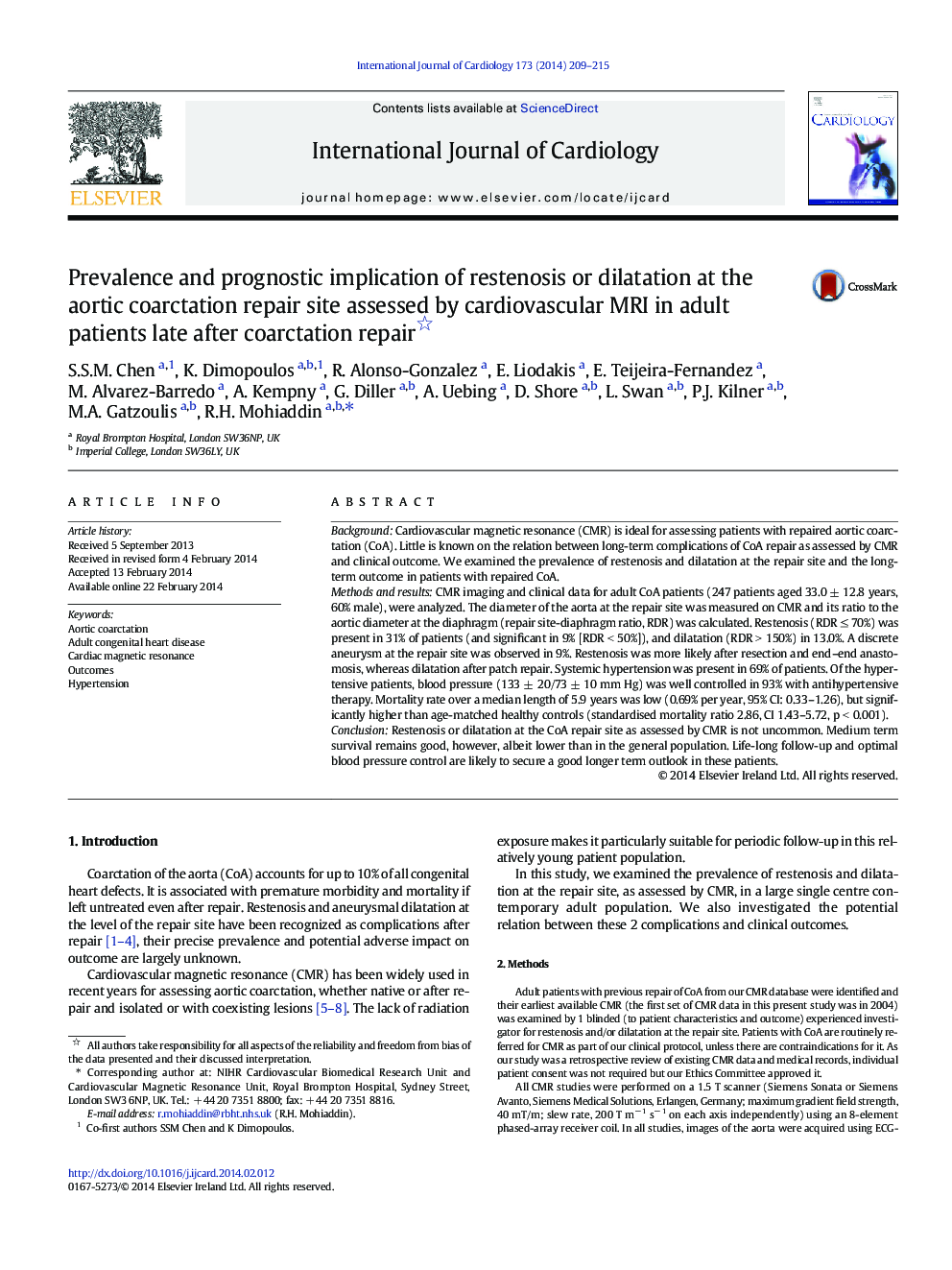| Article ID | Journal | Published Year | Pages | File Type |
|---|---|---|---|---|
| 5972247 | International Journal of Cardiology | 2014 | 7 Pages |
BackgroundCardiovascular magnetic resonance (CMR) is ideal for assessing patients with repaired aortic coarctation (CoA). Little is known on the relation between long-term complications of CoA repair as assessed by CMR and clinical outcome. We examined the prevalence of restenosis and dilatation at the repair site and the long-term outcome in patients with repaired CoA.Methods and resultsCMR imaging and clinical data for adult CoA patients (247 patients aged 33.0 ± 12.8 years, 60% male), were analyzed. The diameter of the aorta at the repair site was measured on CMR and its ratio to the aortic diameter at the diaphragm (repair site-diaphragm ratio, RDR) was calculated. Restenosis (RDR â¤Â 70%) was present in 31% of patients (and significant in 9% [RDR < 50%]), and dilatation (RDR > 150%) in 13.0%. A discrete aneurysm at the repair site was observed in 9%. Restenosis was more likely after resection and end-end anastomosis, whereas dilatation after patch repair. Systemic hypertension was present in 69% of patients. Of the hypertensive patients, blood pressure (133 ± 20/73 ± 10 mm Hg) was well controlled in 93% with antihypertensive therapy. Mortality rate over a median length of 5.9 years was low (0.69% per year, 95% CI: 0.33-1.26), but significantly higher than age-matched healthy controls (standardised mortality ratio 2.86, CI 1.43-5.72, p < 0.001).ConclusionRestenosis or dilatation at the CoA repair site as assessed by CMR is not uncommon. Medium term survival remains good, however, albeit lower than in the general population. Life-long follow-up and optimal blood pressure control are likely to secure a good longer term outlook in these patients.
